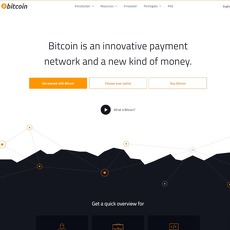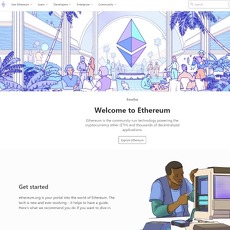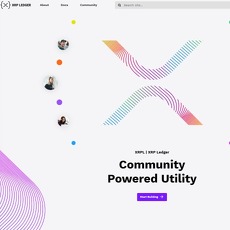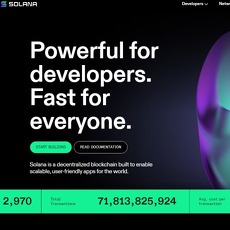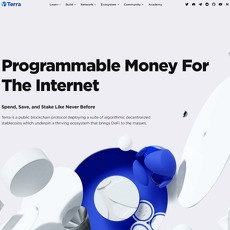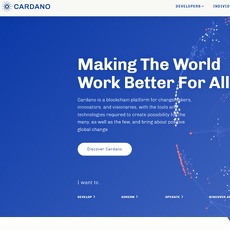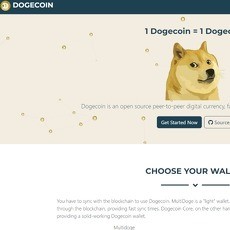USD Coin (USDC) Review
USD Coin (USDC)
www.centre.io
US Dollar Coin (USDC) Review: All you Need To Know
Over the past years since the invention and use of Bitcoin, cryptocurrency has disrupted the traditional finance sector. Cryptocurrency is considered a form of disruptive innovation as it has transformed the state of finance and made banking and trading of assets accessible to anyone and everyone.
With cryptocurrencies, users can make transfers at cheaper rates and store several asset types in decentralized networks. However, several market behaviors can impact cryptocurrencies, leading to a bull or bear in the market. One of the effects of these actions is the increase in volatility.
To mitigate volatility, digital currencies linked to real-world assets were developed. USDC is a digital asset used to maintain the value of digital currencies and is called a stablecoin.
This article will explain what USD Coin (USDC) is, how it works, and its pros & cons.
What is USD Coin (USDC)?
USD coin (USDC) is an open-source, smart contract-enhanced, decentralized digital currency totally backed by the US dollar. Circle refers to it as the “digital dollars for global business.” Circle is a globally recognized financial tech firm that provides growth for investors and businesses worldwide through open and innovative financial systems.
The value of the USD coin has more stability in the price, unlike other digital assets that fluctuate, thereby causing volatility. Hence, USDC is considered a stablecoin.
Stablecoins are digital currencies commonly backed by real-world assets like the US dollar, euro, and Japanese yen and were designed to remain stable.
It is important to note that the US government doesn’t back the USDC token despite its name, and contributions can be made to the project by anyone, which makes it an open-source project.
History of USD Coin?
USD Coin is the first fiat-collateralized stablecoin implementation of the Centre’s stablecoin network. USD Coin was launched in October 2018 as an ERC-20 compliant token on the Ethereum network. It is managed by the Centre consortium founded by Circle and involves a partnership with one of the leading cryptocurrency exchanges, Coinbase.
In 2020, the circulating supply of USDC exceeded 14 billion, which led to a 500% growth and the emergence of Covid-19 made the stablecoin popular since investors employed using the token as a hedge against fiat currency.
In August 2020, the Centre association revealed a USDC version update, USDC 2.0, which included advanced features and functionality for digital wallets and services that support stablecoin.
Considering the controversy with Tether (USDT), like its association with Bitfinex, USD Coin may be a better alternative as its transparency is vetted by experts.
Understanding USD Coin
USD Coin is similar to Tether (USDT) as they were both developed to create price-stable crypto assets. In contrast to the Tether project, the USD Coin was developed on the idea that the industry required a more transparent fiat-collateralized stablecoin with stronger governance. They attempt to resolve this challenge by making available monthly proof of reserves on Centre and providing guidelines for members regarding USD Coin issuance. The stablecoin depends on a proof-of-reserves structure to maintain the reserve.
To become an issuer within the consortium, members must adhere to key rules that include compliance, accounting, licensing, custody of fiat reserves, and technology & operations.
Cryptocurrency exchanges are the major users of the USD Coin as a digital equivalent for fiat currencies, and it is the only known fiat-collateralized stablecoin available on the burgeoning decentralized finance ecosystem.
Minting and burning of coins are managed by Centre contracts and can be used for wallet interoperability use cases. Users who onboard through a web application or any other stablecoin on-ramp managed by a licensed token-issuing member can make a transfer of fiat currency into that Centre issuer’s account. Then a series of commands are executed to mint, verify, and validate fiat tokens pegged to the value of deposited funds.
Redemption of tokens follows a reverse process. Tokens are burned when users visit web applications or any other stablecoin off-ramp managed by a licensed Centre token-issuing member. When verified and validated, funds from reserves are transferred to the customer’s bank account.
What is The Purpose of the USD Coin?
USDC is an alternative to Tether (USDT) or other USD-backed digital currencies (or stable coins) like TrueUSD (TUSD). The coin was developed as a service to transform US dollars into a digital asset and make them available for use over the internet and blockchain networks. However, the digital currency can be changed to USD when the need arises.
How Does USD Coin Work?
USDC is based on the ERC-20 smart contract in the Ethereum blockchain. It is also supported on other blockchains, including Solana, Algorand, Tron, and Stellar. It is an open-source project which makes it transparent.
Transparency is provided by auditing transactions every month and is operated to ensure that the circulating supply is equal to the amount of USD kept in reserve bank accounts. This process works when USD is sent to these bank accounts, which are then used to generate an equal amount of USDC through a smart contract based on the Ethereum blockchain and sent back to the user.
What type of stablecoin is USDC?
USD Coin is a fiat-collateralized stablecoin, meaning that USDC tokens are backed by fiat money like US dollars.
USDC vs. USDT
Despite that USDT is used more frequently for trading, USDC is mostly described as a safer stablecoin option since the project is made to comply with audits and governmental regulation and is more transparent.
Trading Pairs
USDT and USDC are both popular choices to be traded and used as trading pairs on DeFi (decentralized finance) protocols. With USDC being 4 years behind USDT, they have long been the most widely traded stablecoin with notoriously the highest trading volume. USDC is gradually closing the gap and is now available on many of the same widely-used blockchain networks as Tether.
Safety and Transparency
Due to Tether’s lack of consistency to release reports on how the coin is backed, it has received several scrutinies. On the other hand, Centre consortium has consistently released updates on how the USD Coin is supported. This has positioned USDC well in terms of regulations and has built trust.
Although Tether eventually released updates of its reserve in march 2021 and has taken steps to become transparent and build trust by providing a consistent update, still some users call on Tether to perform a complete audit.
Use Cases for USDC
As a stablecoin digital asset, USD Coin can be used in many ways:
- Hedge against volatility
- Remittances
- Stable price-pegging
- Global crowdfunding
- US dollar exposure
- Pricing in fiat money
- Hedge against inflation
- Blockchain interconnection
Is USDC Worth Buying?
Yes, USDC is a great alternative for investors looking for less volatility in the market.
Is USDC A Good Investment?
USDC stands out from several digital currencies for the following reasons:
Transferability: Users with an Ethereum wallet can transfer USD Coin in seconds regardless of the time. This means that users can send large payments, and it will get to the recipient within seconds, and the process will be as easy as buying something from an e-commerce store. In perspective, wire transfers may take between 1 to 3 days.
DApps Compatibility: USDC is an Ethereum-based (ERC-20) token. Most apps that accept crypto dapps, blockchain-supported games, and exchanges accept USDC, which permits USDC holders to buy digital assets.
Transparency: Center Consortium, founded by Circle, which involves a partnership with Coinbase, a cryptocurrency exchange, issues USDC.Transactions are audited by experts and involve two reputable companies and leading accounting service firms to ensure transparency.
Price Stability: This is a common attribute across all Stablecoins. Investors use Stablecoins because they allow exposure to the crypto space without having to deal with the fear of volatility.
How To Mine USD Coin (USDC)
Unlike Bitcoin, you can’t mine the US dollar coin (USDC). New USDC tokens are produced every time users buy or sell currencies and acquire USD Coins, and dollars are added to the bank account behind USDC when this happens.
Is USDC Always $1?
USD coin (USDC) is a type of digital asset whose value is pegged 1:1 with the US dollar and is an Ethereum-based stablecoin. That means customers with a US dollar bank account can always redeem a unit of USD Coin for $1.00, giving it a stable price.
Is USD Coin Safe?
USDC is safe compared to other cryptocurrencies. However, all cryptocurrencies have inherent risks. You stand a chance of losing because investments generally have risks, and this is what makes the market what it is.
How To Invest in USD Coin (USDC)?
Coinbase remains one of the easiest ways to buy the USDC stablecoin. USD Coin is also available to trade on Binance, Uniswap, Crypto.com, Bitfinex, and Kraken.
Wallets
Popular cryptocurrency wallets support USD Coin because it runs on the Ethereum blockchain. Wallets include both software wallets and hardware wallets such as Coinbase and Ledger respectively.
Transaction Times
Similar to other coins that run on the Ethereum blockchain, USD Coin transactions require 20 confirmations and take about five minutes to complete, according to Kraken.
Fees and Expenses
USDC transactions require Ethereum gas fees, and gas fees can fluctuate depending on the network’s congestion.
Pros and Cons of USD Coin
Pros of USD Coin
- Stable price
- Good reputation
- Used to hedge against volatility
Cons of USD Coin
- It cannot be mined
- No potential to appreciate in value
- Transaction fees can be high. And that is dependent on the state of the Ethereum network
Frequently Asked Questions (FAQs)
What is USDC?
USDC is a fully fiat-collateralized US dollar stablecoin based on an open-source network and is backed by a stablecoin framework developed by Centre.
Why is USDC important and needed?
As crypto-assets grow and become even more important and widely accepted, it is now very important to use fiat currencies for payments and trading. Stable currencies, likely real-world currencies such as the US dollar, EUR, GBP, JPY, and RMB, are necessary for promoting mainstream adoption of payments using blockchain technology and supporting the increase in financial contracts built on smart contract platforms.
Similar projects lack full financial and operational transparency, have unknown banking and audit partners, and have closed source technologies. USDC solves the problem of transparency by operating within the US money transmission laws, offering financial and operational audits, and partnering with established banks and auditors. Also, it is built to have an open membership framework that allows qualified financial institutions to participate.
How does USDC work?
Customers who onboard via an issuer can transfer funds into the system, and then the issuer executes a series of commands to mint, verify, and validate USDC tokens. As the customer sees fit, tokens can be transferred elsewhere, subject to the token’s compliance controls.
In redeeming tokens, the reverse sequence is used. When a customer requests a redemption, an issuer verifies and validates before the appropriate USDC tokens are burned. And then, the funds from underlying reserves are then transferred to the customer’s external bank account.
How does USDC compare to other stablecoin initiatives under development?
The Centre framework is streamlined to provide a fiat-collateralized asset-backed approach to stablecoins. The Centre team believes that users don’t desire a new currency. Instead, they want to be able to use their major national (or global) reserve currencies on top of open-source chains. Customers want price stability, transparency, and trust.
Also, they believe that the market will value an open framework and a model governed by members that market participants can build upon, including companies in the crypto ecosystem, banks that want to take advantage of public chains for settlement, and leading digital wallet providers.
How do financial institutions become issuers of USDC?
According to Centre, commercial issuers of USDC will be required to:
- Hold applicable licenses in their operating jurisdictions
- Have audited compliance programs that meet The Financial Action Task Force standards
- Provide monthly published attestation of reserves certified by public auditors and hold underlying reserves on a one-to-one basis with issued tokens
- Support exchange and redemption of US Dollar Coins from other authorized issuer members
- Meet the reporting and review requirements established by Centre


